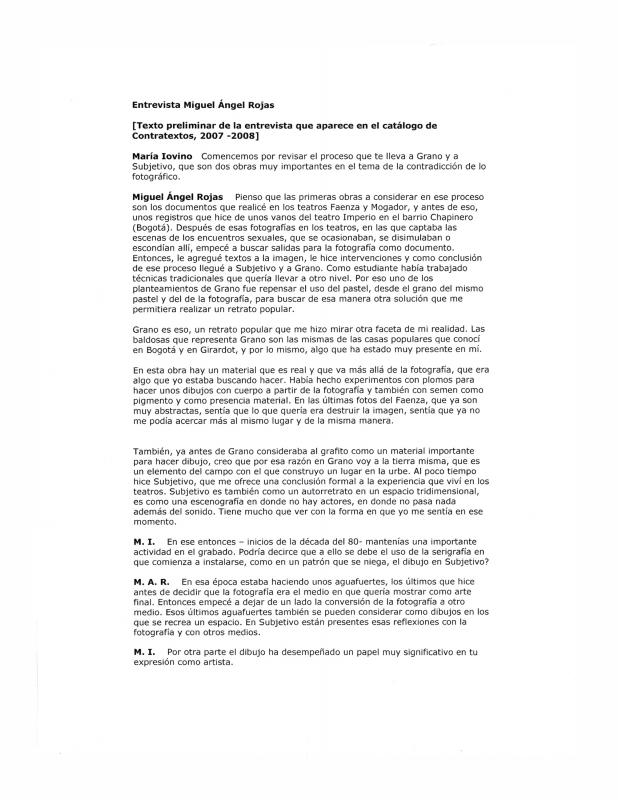The Colombian anthropologist and art critic Natalia Gutiérrez (b. 1954) has long been an expert on the work of Miguel Ángel Rojas (b. 1946). Her interest in Rojas is based on his work with photographic images, and the relationship between photography and painting and the movies. Rojas’ wanderings around Bogotá, especially in the historic center of the city, are defining factors as regards the concept of space and time that he has developed in his work.
This interview helps to explain what it meant to Rojas to spend time at the Faenza Theater during the years when it was an underground haunt for homosexuals, who were not highly regarded in Bogotá society, as Rojas mentions in the article. His visits to places like this led him to embrace an aesthetic approach to the image that became an essential part of many of his works, an aesthetic driven by a desire to bring things to light under challenging circumstances in terms of their visibility. The article also refers to the style of reporting that became popular during the war, which sought to capture reality in difficult conditions and that, therefore, required a new level of audacity on the part of the photographer. One of the works analyzed by Gutiérrez is Corte en el ojo [Cut in the Eye] (2003), a video in which Rojas uses the photographs he took at the Faenza in the 1970s, presenting them in an almost frozen frame format. They are long exposure shots that question the stillness and the movement of visual productions.
Rojas’ work has also been studied by the critic and curator María Iovino (b. 1962). “Miguel Ángel Rojas” [see doc. # 860526] is another important interview that, together with the one by Gutiérrez, provides a very thorough portrait of the artist.
Natalia Gutiérrez stands out in the field of art as a result of her work as an interviewer. She manages to approach artists very intelligently in order to study their work and its relationship to their major creative experiences. She has therefore published articles that provide the reader with in-depth reviews of the work of well-known contemporary artists.

